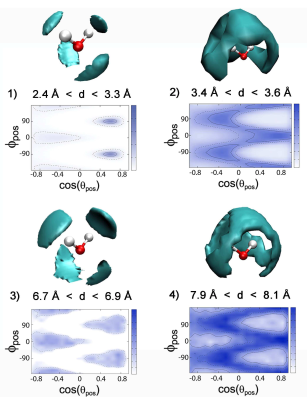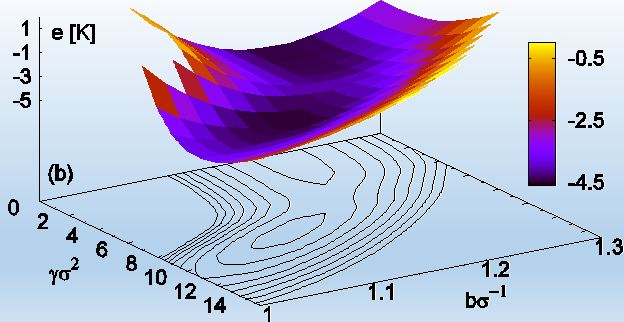Research
Lipid systems
Flip-flop transitions of lipids in biomembranes. Modelling and simulation of cell membranes. Protein-drug interaction in the cell membrane.
(Jordi Martí)
Water, hydration and adsorption
Water-solid interface and hydration shells in nanotubes, graphene, nanopores. Proton transfer in aqueous systems. Water and aqueous ionic solutions under extreme conditions. Plastic crystal phase of water, analysis of water at ambient and supercritical environments.
(E. Guàrdia, J. Martí, R. Rey)

Energy relaxation in molecular liquids
Computation of energy fluxes and non-equilibrium excitations of a solute. Energy relaxation processes: vibrational, rotational and solvation relaxation (dynamical response of the solvent to an electronic excitation of the solute)
(Rossend Rey)
Molten salts
Structure, ionic transport and collective dynamics of molten alkali halides and superionic molten salts. Polarizable ionic models and dielectric properties.
(J. Trullàs, O. Alcaraz)
Non-equilibrium Statistical Mechanics
Application of stochastic and numerical methods to the study of complex systems. Topological and temporal properties of natural systems, as represented in terms of complex networks. Dynamical processes and non-equilibrium phase transitions in disordered substrates. Dynamics of social systems. Human activity and dynamics. Non-Markovian temporal networks. Collective motion.
(Romualdo Pastor)
Quantum matter
Study of quantum systems at ultra-low temperatures. Quantum matter (gas, liquid, solid) at temperatures close to absolute zero: superfluidity, superconductivity, Bose-Einstein condensation. Different types of Quantum Monte Carlo methods are used to numerically simulate in detail such systems
(J. Boronat, J. Casulleras, F. Mazzanti, G. Astrakharchik, P. Massignan, C. Cazorla)

Molecular liquids and ionic solutions
Molecular liquids
Water, alcohols, amides,... Influence of the H-bonds on the structure and dynamic properties.
(E. Guàrdia, J. Martí, R. Rey, G. Sesé)
Ionic solutions
Solvent effects on the interionic interactions and the ionic interconversion processes. Electrolytes. Biomolecules in solution.
(E. Guàrdia, J. Martí, R. Rey, M. Canales)
Materials Physics
- Ferroelectrics and multiferroics
- Fast-ion conductors
- Photocatalysts and electrocatalysts
- Caloric and multicaloric materials
- Thermoelectrics
- Hydrogen storage
(Claudio Cazorla)
Share: